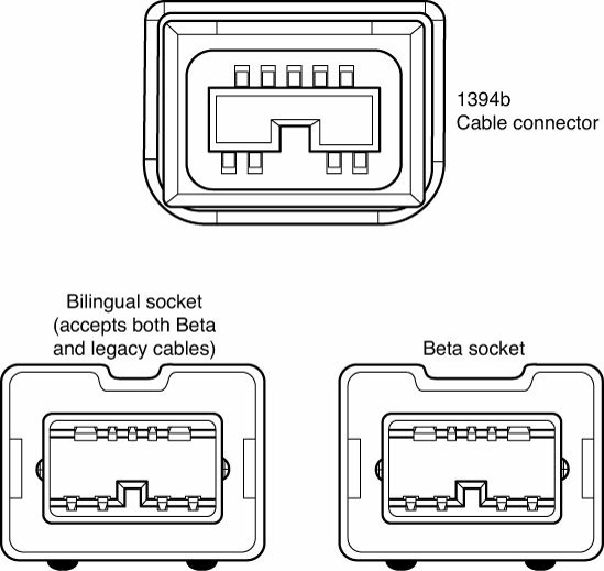Hardware Reference
In-Depth Information
• Self-healing loops. If you improperly connect 1394b devices to create a logical loop, the
interface corrects the problem instead of failing, as with 1394a.
• Continuous dual simplex. Of the two wire pairs used, each pair transmits data to the other
device so that speed remains constant.
• Support for fiber-optic and CAT5 (Category 5) or better network cable and standard 1394a and
1394b copper cable.
• Improved arbitration of signals to support faster performance and longer cable distances.
• Support for CAT5 or better cable, even though it uses pairs on pins 1/2 and 7/8 only for greater
reliability. It also doesn't require crossover cables.
The initial implementations of IEEE 1394b use a new nine-wire interface with two pairs of signaling
wires. However, to enable a 1394b port to connect to 1394a-compatible devices, two versions of the
1394b port are used:
• Beta
• Bilingual
Beta connectors support only 1394b devices, whereas bilingual connectors can support both 1394b
and 1394a devices. As
Figure 14.16
shows, the connectors and cables have the same pinout but are
keyed differently.
Figure 14.16. Bilingual and beta 1394b connectors and cables. Many 1394b implementations use
both types of connectors.


